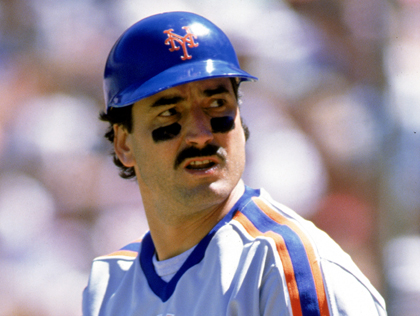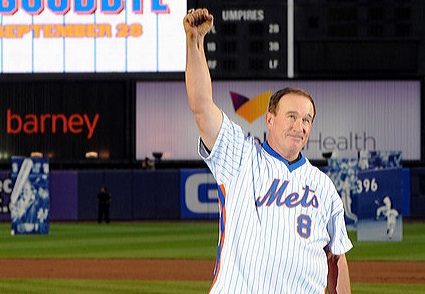
Most everyone when they talk “Mets” and “trades” usually discuss the bad ones. We’ve heard them all: Seaver to the Reds, Ryan-for-Fregosi, Dykstra and McDowell for Juan Samuel.
But the Mets have been the beneficiaries of transactions and here are five of the best in the team’s 60-year history.
5. Donn Clendenon from the Montreal Expos
On the verge of staggering baseball’s foundation by the middle of June in 1969, the time of the old trade deadline, the Mets trailed the Chicago Cubs by eight games in the NL East. Pitching was plentiful, but the contact-driven offense averaged 3.8 runs.
It’s not about getting the best player. It’s about getting the right player. And Clendenon was a seamless fit. The veteran first baseman was languishing with the expansion Expos after leaving the Pirates and even briefly retiring, had found the right team. He deposited twelve home runs, thirty-seven RBIs and a .777 OPS
But beyond the periphery, Clendenon reinforced the Mets’ lineup against left- handed pitching, deepened a relatively thin bench, was defensively solid at first base and added experience to a team that had never faced the pressures of a pennant race.
It led to the overthrow of the Chicago Cubs’ NL East lead, steamrolling to the division title and then conquering the National League pennant. Those happenings were prologue to what took place in the World Series — when he batted .357 and went deep in Games 2, 4 and 5 to garner Most Valuable Player award honors.
While the five players traded for him proved to be of small consequence, Clendenon enjoyed a better season in 1970: slugging .515, charting an OPS of .863 and driving in 97 runs.
4. Gil Hodges from the Washington Senators
Not all trades are for players. In this case, Hodges did more than any player could.
He had been a Met, a member of the original 1962 club in the twilight of his playing career. More famously, he was a significant part of the Dodgers’ success in the late 1940s and 1950s. The leadership qualities which made him a respected first baseman weren’t lost on organizations seeking a manager. And for more than four seasons, he oversaw an inexperienced Washington Senators club which improved incrementally each year.
Mets vice president Johnny Murphy sought a replacement for the recently-departed Wes Westrum after 1967. He had a connection in Washington: George Selkirk, the Senators’ general manager and Murphy’s former roommate when they were Yankee teammates.
Selkirk wouldn’t give in so easily. But shortly after Murphy took over GM duties from Bing Devine, the offer was Hodges for right-handed pitcher Bill Denehy and $100,000 as compensation to release Hodges from his deal with Washington. Realizing the possibility of no return if he decided to leave when the contract expired following the ‘68 season, Selkirk relented.
In the story of any franchise, there are a few seminal moments. The insertion of Hodges as manager is one of them. Inheriting a club that had suffered 100 or more defeats in five of its first six seasons, he instilled a confidence that future Mets teams would be different than their predecessors. And in 1969, he took them to a place that few — if any — thought was possible.

3. Gary Carter from the Expos
From 1983 to 1984, the Mets crawled out from their cellar dwelling and ventured up a few flights up with a 22-win improvement. Then came their last big stride toward the summit in December ’84.
A good hitting catcher who can also play solid defense and nurture pitchers is akin to a diamond in the rough. Frank Cashen, and just about everyone else who watched, knew this was their glaring weakness. While serviceable, Mike Fitzgerald provided next to no impact on offense.
When the Mets’ GM got word that the Montreal Expos were dismantling, he made his move. Carter — a two-time All-Star MVP, Gold Glover, middle-of-the-order bat and natural-born leader — checked every box.
Even if it took dispatching the popular Hubie Brooks, plus Fitzgerald, Herm Winningham, and Floyd Youmans, it was a deal worth making. The Mets had upgraded from having a catching void to having the best catcher. And with it came anticipation for a season unlike any in more than a decade.
The perceived reputation about Carter’s fixation for the camera and unabashed enthusiasm quickly took a back seat. Gary immediately gained favor with the public and his new teammates. A walk-off homer on Opening Day was a good way to do that. But so is a career-high thirty-two home runs, 100 RBIs, helping a young starting rotation to newfound success, and a blistering September that led the Mets to 98 wins.
He spent four more seasons in a Mets uniform. His last peak year was in ’86, but it ended perfectly. He set a franchise record with 105 RBIs. More importantly, the Mets got their championship ring. Carter delivered crucial hits in October — none more than the single to keep Game 6 of the World Series alive.
2. Mike Piazza from the Marlins
Up until 2016, Tom Seaver was the only player inducted into the Hall of Fame as a New York Met. If not for some persistence in the front office coupled by media and fan fervor in May 1998, he’d still be the only one — and Mike Piazza would be in Cooperstown wearing someone else’s cap.
From 1993 through 1997, Piazza batted .337 with an average of 33 homers and 105 RBIs — remarkable for any hitter and extraordinary for a catcher. But he and the Los Angeles Dodgers couldn’t agree on a contract extension. L.A. sent Piazza to Florida in a mega-deal. But with the Marlins in the midst of a fire sale, his stay in Miami wasn’t permanent.
The New York public and media saw an irresistible opportunity for the Mets to sign a transformative figure. The Mets had broken a six-year losing season skid with 88 victories in 1997. They resembled a good team, but one that wasn’t going to scare anyone. The fans knew the type of difference maker Piazza could be.
Management waffled at first, but eight days after he landed to South Beach, the Marlins got Preston Wilson, Ed Yarnall and Geoff Goetz. In return, Queens got its Piazza delivery — causing tremendous buzz, even by New York standards.
From ’98 through 2005, on his way to becoming the most prolific home run-hitting catcher in baseball history, Piazza compiled 220 as a Met while driving in 655 runs. He still holds the highest slugging percentage in team history, ranks second in OPS, and third in homers. He led the Mets to consecutive postseason appearances, a World Series, made six All-Star appearances, and delivered an unforgettable home run in the first game in New York City following September 11, 2001.
1. Keith Hernandez from the Cardinals
In June 1983, the Mets wanted Hernandez, but Hernandez didn’t want the Mets. When he got word of his transition from the reigning champion Cards to the moribund Mets, Keith contemplated retiring rather than playing in New York.
In Frank Cashen’s efforts to restore respectability, he had cultivated promising prospects that had reached — or were approaching — the big-league level. But no amount of veteran leadership would come from the farm system. At the trade deadline — ironically, six years to the evening from when the franchise broke with relevancy by shipping away Tom Seaver—Cashen pulled a coup that put the Mets rebuild on the accelerator.
Hernandez and St. Louis manager Whitey Herzog were at odds. Thus, the former MVP and multiple Gold Glove-winning first baseman was expendable. All the Mets had to give up was a declining relief pitcher, Neil Allen, and another arm, Rick Ownbey, who would make seven more big-league starts and win once.
In short, this was grand larceny.
But it wasn’t really stamped a steal right away. Another last-place finish did little to convince Hernandez to stay as he headed into free agency. He batted .306 over 95 games, maintained his streak of NL Gold Gloves, and quickly cemented himself as a team leader. Keith needed to assurance that New York was the right place long-term. His father, Cashen, and Rusty Staub all spoke to him about the benefits of being on the Mets — specifically about the talent coming in the near future.
Keith was convinced. And soon, the greatest trade in Mets history would reap its benefits.















